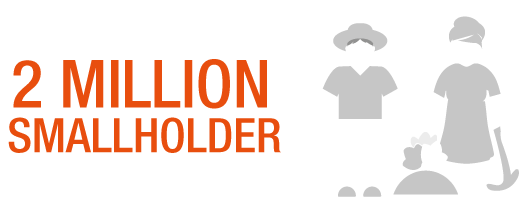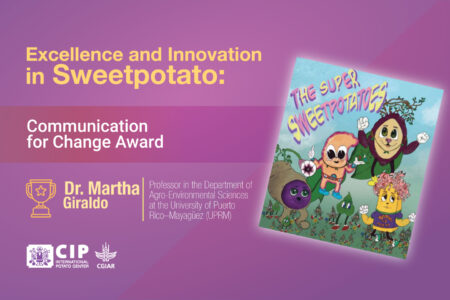KEY ACHIEVEMENTS

in Africa and Asia increased yields and incomes by planting quality seed potatoes and improved varieties.

in Africa and Asia improved through development and dissemination of vitamin A-rich OFSP varieties.

a year with scientists globally to develop more nutritious, productive and climate-resilient varieties.





